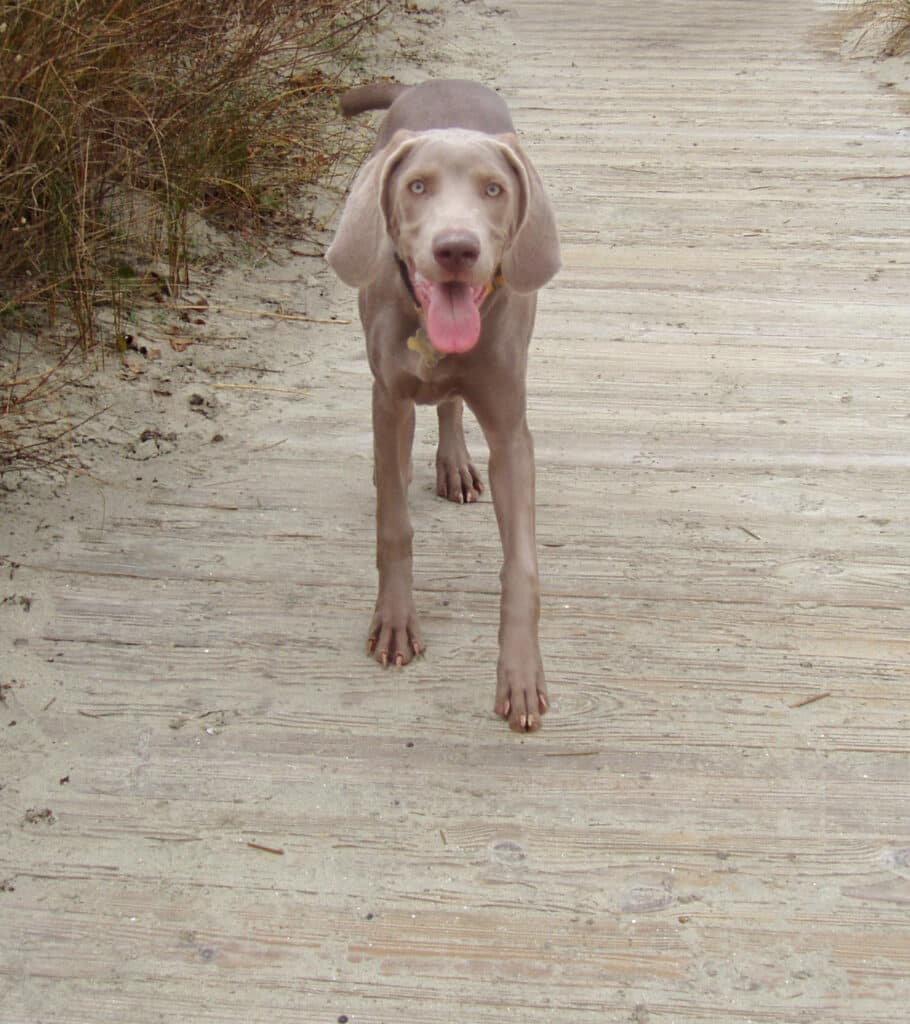Stomach torsion dog symptoms: recognition, prevention and treatment
introduction
Gastric torsion in dogs, also known as gastric torsion or gastric torsion , is a life-threatening emergency that requires immediate veterinary attention. In this article, we will discuss the symptoms of gastric torsion in dogs, how it can be recognized, prevented and treated.

Stomach torsion dog symptoms
- Bloated stomach : One of the most common signs of gastric torsion is a suddenly bloated stomach. The abdomen may be hard and painful when touched.
- Restlessness and discomfort : Dogs with a twisted stomach may appear restless and uncomfortable because they are in severe pain.
- Vomiting and Gagging : Dogs with torturous stomach often attempt to vomit or gag without success.
- Panting and rapid breathing : Dogs with stomach torsion may pant heavily and exhibit rapid breathing because blood flow to the heart is restricted.
- Symptoms of Shock : Dogs may also show signs of shock, such as cold limbs, pale gums, and rapid pulse.
Causes and risk factors Stomach torsion dog symptoms
The exact causes of gastric torsion in dogs are not yet fully understood. However, it is believed that the following factors may play a role:
- Breed : Large breeds with deep chests, such as Great Danes, St. Bernards, Weimaraners and Irish Wolfhounds, are at higher risk of stomach torsion.
- Age : Older dogs are at higher risk of stomach torsion.
- Feeding methods : Eating a large meal per day or feeding dry food that can expand in the stomach increases the risk of stomach torsion.
- Stress : Stressful situations can increase the risk of stomach upset.
Prevention of gastric torsion in dogs
- Multiple small meals per day : Feed your dog several small meals throughout the day to reduce stress on the stomach.
- Slow Feeding Bowls : Use slow feeding bowls to prevent food gorging.
- Adequate rest after meals : Allow your dog to rest for at least an hour after eating to aid digestion and reduce the risk of stomach upset.
- Stress management : Avoid stressful situations for your dog and practice regular relaxation techniques such as massage or aromatherapy.
Treatment of gastric torsion in dogs
- Emergency Veterinarian : If you suspect your dog is suffering from gastric torsion, seek emergency veterinary care immediately. The quicker your dog receives treatment, the better his chances of survival.
- Stabilization : First, the veterinarian try to stabilize your dog's condition by administering fluids and medications to treat shock.
- Decompression : In some cases, the vet may try to deflate your dog's distended stomach by inserting a tube or puncturing the stomach.
- Surgical treatment : In most cases, surgery is required to untwist and fix the stomach. This prevents future spins.
- Aftercare : Careful follow-up care is required after treatment to prevent complications and support your dog's recovery.
Frequently asked questions - FAQs about gastric torsion dog symptoms:
What are the symptoms of gastric torsion in dogs?
The symptoms of gastric torsion in dogs are a bloated stomach, restlessness and discomfort, vomiting and retching, panting and rapid breathing, as well as symptoms of shock.
Which dog breeds are more prone to gastric torsion?
Dog breeds with deep chests, such as Great Danes, St. Bernards, Weimaraners and Irish Wolfhounds, are more prone to stomach torsion.
How can you prevent stomach torsion in dogs?
You can prevent gastric torsion in dogs by feeding several small meals per day, using slow feeding bowls, ensuring adequate rest after meals, and practicing stress management.
How is gastric torsion in dogs treated?
Stomach torsion in dogs is treated with immediate veterinary attention, stabilization, decompression, surgical treatment, and careful follow-up care.
Why is gastric torsion in dogs life-threatening?
Stomach torsion in dogs is life-threatening because it restricts blood flow to the heart, can damage the stomach, and can lead to shock without immediate treatment.
Summary
This article covers gastric torsion dog symptoms, causes, prevention and treatment of stomach torsion in dogs. Symptoms include abdominal distension, restlessness and discomfort, vomiting and retching, panting and rapid breathing, and symptoms of shock. Causes and risk factors include breed, age, feeding methods and stress. Prevention includes several small meals per day, slow feeding bowls, adequate rest after meals, and stress management. Treatment of gastric torsion in dogs requires immediate veterinary attention, stabilization, decompression, surgical treatment, and careful follow-up care. Large breeds of dogs with deep chests, older dogs, and those with certain feeding methods or stressors are at higher risk of gastric torsion.
outlook
Current research is increasingly investigating which genetic factors contribute to the development of gastric torsion. Some risk factors have already been identified that may increase the risk of the disease being inherited. In addition, the role of the dog's diet and feeding habits is also being intensively researched. For example, it has been shown that consuming food too quickly or consuming too much food can increase the risk of gastric torsion.
Another important focus of current research is the development of new diagnostic and therapeutic procedures. In particular, minimally invasive methods are being researched that are intended to enable gentle and rapid treatment of gastric torsion. Research is also focused on developing new drugs that can alleviate the symptoms of gastric torsion or prevent the disease from occurring.
In summary, research into gastric torsion in dogs is being carried out intensively at various levels. By identifying risk factors and developing new diagnostic and therapeutic methods, the treatment and prevention of this life-threatening disease should be improved.
- Stomach torsion dog symptoms: recognition, prevention and treatment
- introduction
- Stomach torsion dog symptoms
- Causes and risk factors Stomach torsion dog symptoms
- Prevention of gastric torsion in dogs
- Treatment of gastric torsion in dogs
- Frequently asked questions - FAQs about gastric torsion dog symptoms:
- Summary
